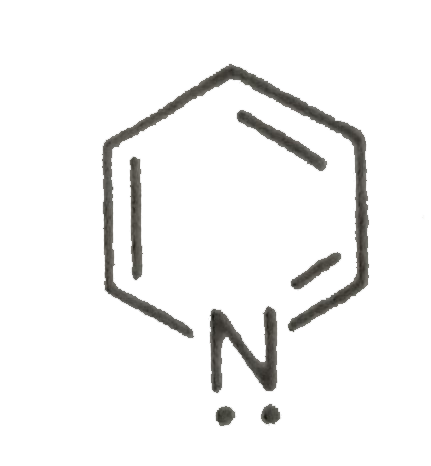Complete Solutions to MCQ s of chapter GENERAL ORGANIC CHEMISTRY of Class 12 book with complete answers and questions
| Class 12 | CHEMISTRY |
| Chapter | GENERAL ORGANIC CHEMISTRY |
| BANSAL | MCQ s |
| Number Of Questions | 58 |
| Academic Year | 2023-24 |
Find out the correct statement(s) about given compound
 01:38View Solution
01:38View SolutionIncorrect order of Heat of hydrogenation per `pi`-bond is
02:20View SolutionWhich statement is correct for electromeric effect
02:26View SolutionHyperconjugation occur due to overlaping of
02:37View SolutionWhich of the following properties cannot be explained on the basis hyperconjugation.
01:40View SolutionCorrect order of stability-
02:00View SolutionWhich of the following is most stable carbocation.
03:28View SolutionDeactivating effect of `-C Cl_(3)` can be explained on the basis of
05:10View SolutionWhich of the following alkenes will react fastest with `H_(2)` under catalytic hydrogenation conditions
05:59View SolutionWhich of the following has maximum hydrogenation energy.
02:03View SolutionSelect the nucleophile
02:15View SolutionAn electrophile among the following is-
01:37View SolutionA nucleophile is:
02:02View SolutionWhich of the following species is an electrophile?
02:27View SolutionWhich is not considered as electrophile
01:14View SolutionHomolytic fission of organic compound yields
00:39View SolutionThe number of electrons present in the valence shell of carbon of `CH_(3)overset(+)(C)H_(2)` ion bearing `+ve` charge:
01:01View SolutionInductive effect refers to-
02:21View Solutionmost acidic hydrogen is present in
01:55View SolutionThe least acidic among the following acids is-
01:50View SolutionAmong the following which one is most basic-
01:25View SolutionWhich one is the characteristic feature of a free radical:
00:54View SolutionBenzoylperoxide, when heated to about `80^(@)`C gives a-
01:08View SolutionWhich one is a `1^(@)` carbocation of the following
03:03View Solution`overset(Theta)(C)H_(3)` is less stable than
01:50View SolutionWhich of the following alkyl groups has the maximum `+I` effect?
01:45View SolutionDecreasing order of -I effect of the triad `[-NO_(2),overset(o+)(N)H_(3),-CN]` is
02:37View SolutionMaximum -I effect is exerted by the group-
01:56View SolutionChoose the strong base from each of the following pair
(1). `.^(-)OC_(2)H_(5),.^(-)OH`
(2). `HC--=C^(-),CH_(3)^(-)`
(3). `Br^(-),I^(-)`
(4). `CH_(3)^(-),NH_(2)^(-)`02:38View SolutionBasic nature of `H_(3)O^(+),H_(2)O` and `OH^(-)` is in order
01:55View SolutionWhich is most stable carbocation
03:16View SolutionAmong the following compound, the weakest acid is-
03:50View SolutionMost stable carbanion is :-
02:36View SolutionWhich of the following compounds is most acidic ?
02:34View SolutionWhich is the decreasing order of stability
(a). `CH_(3)-overset(+)(C)H-CH_(3)`
(b). `CH_(3)-overset(+)(C)H-O-CH_(3)`
(c). `CH_(3)_overset(+)(C)H-CO-CH_(3)`01:25View SolutionWhich molecule does not show resonance
01:32View SolutionPolarization of electrons in acrolein may be written as:
01:09View SolutionIn pyridine,
 Number of conjugated electrons are 01:30View Solution
Number of conjugated electrons are 01:30View SolutionIn which compound delocalization is not possible-
02:50View SolutionConsider the following compound:
`underset(1)(C)H_(2)=underset(2)(C)H-underset(3)(C)H=underset(4)(C)H_(2)`
carbon-carbon bond length between `C_(2)` and `C_(3)` will be-02:29View SolutionWhich compound has higher resonance energy in the following pairs.

(C). `underset((I))(CH_(2)=CH-F)" "underset((II))(CH_(2)=CH-Br)`02:26View SolutionWhich is less stable canonical structure in the following pairs.
`underset((I))(overset(o+)(C)H_(2)-O-CH_(3))" "underset((II))(CH_(2)=overset(o+)(O)-CH_(3))`01:27View SolutionWhich marked atom's lone pair participate in resonance phenomenon
 03:47View Solution
03:47View SolutionWhich molecules is not showing resonance.
01:33View SolutionWhich molecules I showing `pi`-electrons alternate to `pi`-electron conjugation
01:24View SolutionCorrect order for resonance energy in the following molecules.
 03:25View Solution
03:25View Solution
In the following canonical structures which is most stable structure.01:26View Solution
In the following canonical structures which is least stable structure01:54View Solution
Which is incorrect canonical structure01:45View SolutionIn which molecules non-conjugation is present
01:42View SolutionIn which molecules resonance phenomenon operates-
02:16View SolutionWhich of the following carboxylic acids is most acidic in character-
03:03View SolutionWhich one of the following is most acidic
03:37View SolutionConsider the following carbocation-
(a). `CH_(3)-overset(o+)(C)H_(2)`
(b). `CH_(2)=overset(o+)(C)H`
(c). `CH_(2)=CH-overset(o+)(C)H_(2)`
(d). `C_(6)H_(5)-Coverset(o+)(H)_(2)`02:50View SolutionIncreasing order of acidic strength among `p-`methoxyphenol `(i)p-`methylphenol `(II)` and `p-`nitrophenol `(III)` is
02:23View SolutionThe groups which when present in para position tend to decrease the acidity of phenol are-
02:12View SolutionWhich free radical is the most stable-
01:54View SolutionWhich carbocation is the most stable-
03:01View Solution
MCQ s questions and complete solutions for chapter GENERAL ORGANIC CHEMISTRY of BANSAL CHEMISTRY (HINGLISH) of Class 12
